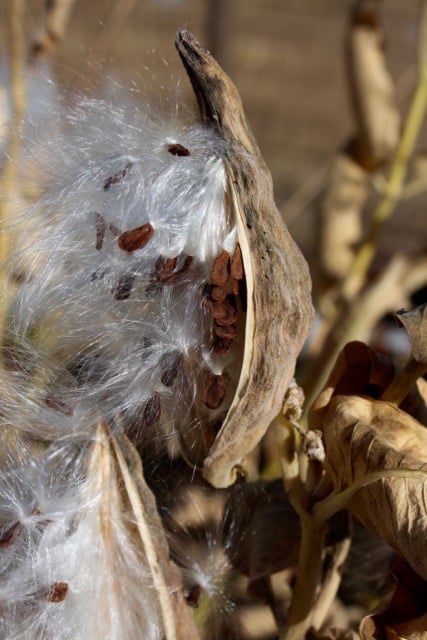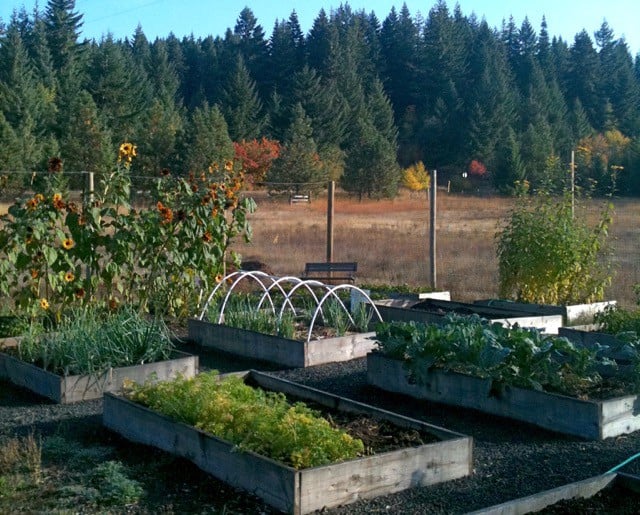by Sue Kusch
Each spring I promise myself that I will be prepared for garden pests and problems. But each year I am surprised at the sudden appearance of holes in my cabbage leaves, the sticky collection of aphids on my kale and Brussel sprouts, and my lack of preparedness.

I look under leaves and see colonies of future pests in the form of eggs. The adult aphids must laugh at my daily sprays of cold water – a strategy highly recommended by garden experts – as they return to their feeding frenzy the minute I leave the garden.
Though I have been gardening for decades, nature still teaches me lessons each year. Over the years, I have learned from rabbits, pocket gophers, deer, birds, toxic chemical residue, a variety of insects, and of course, the plants. There will always be challenges with garden pests and diseases when growing vegetables, fruits, and herbs but the changes in our climate are creating more chronic concerns.
Start With Prevention
Benjamin Franklin, a writer of wisdom, acknowledged the value of preparation and planning when he wrote, “An ounce of prevention is worth a pound of cure.”
Understanding the conditions that favor pest infestations and plant diseases is the first step to prevention. Growing healthy plants always begins with healthy soil and healthy plants. Much like our human body, soil is a remarkable ecosystem of fungi, bacteria, and viruses that serve in the decomposition and nutrient cycling of organic matter. Think of the soil ecosystem as part of a plant’s immune system.

The more organic matter (e.g., compost, aged animal manures, green manures) you add each year, the healthier the ecosystem. The job of the billions of microorganisms in your soil is to devour the organic matter you provide. One of the hardest habits to break is our tendency to make the soil “nice-looking” by tilling each spring. It’s best to avoid disrupting a soil ecosystem by never tilling and seldom digging. Building up a thriving soil ecosystem is the goal because it provides the foundation for pest and disease management and nutrition uptake.
Growing healthy plants is the next level of prevention. Plants weakened by a lack of nutrients, lack of consistent watering and stressful conditions (excessive temperatures, compacted soil or root systems) are easy targets for pests and disease. Avoid planting unhealthy plants in your garden and remove any plants that show a weakened condition. Know the sources of your plants if taking divisions, cuttings, or mature plants; this is a common way that diseases can be transported into healthy gardens.
Jumping Worms Don’t Eat Plants
Not all garden pests fly or eat plants: The Asian jumping worm is an example of an invasive species that has now spread to 1/3 of the states in America by stowing away in plants, mulch, and compost. These worms damage the soil by consuming the nutrient-rich topsoil, inhibiting the normal soil food cycle. They don’t survive cold winters but their eggs do! Check with your state’s Cooperative Extension to see if the jumping worm is present in your area and how to avoid bringing it into your garden.
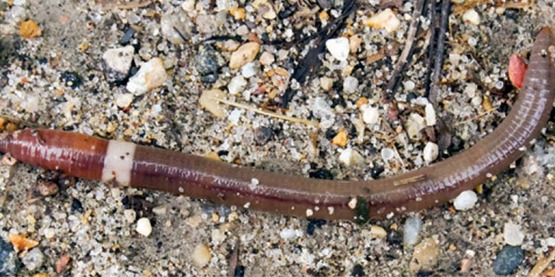
Planting Strategies for Pest Management
Many gardeners plant mini mono-cultures in their vegetable beds. The aphids in my kale bed must have been delighted to see a row of kale plants next to each other and then a row of brussels sprouts next to the kale (aphids love members of the Brassica family). I might as well have hung a neon sign that said, “All You Can Eat Aphid Buffet.” Planting in rows is fine but intercropping (planting between rows) with insectary plants to bring in beneficial insects is a smart strategy.

Image by congerdesign from Pixabay
“Insects are a symptom that there’s something wrong with the growing conditions in your garden. If you use pesticides, you’re treating the symptom. If you try and make those growing conditions better, you’re correcting the cause.”
Eliot Coleman, Organic gardener and author
Predatory insects are called “beneficials” because they benefit your garden by eating the insect pests that are eating your plants and possibly transmitting diseases. Plant a mix of different-sized insectary plants; some will serve as protection and egg-laying habitat for beneficials. Green manure crops like clover and vetch not only benefit soil but also attract beneficial insects.
Insectary plants offer three primary services to your garden:
- to lure in pollinators like bees, wasps, ants
- to distract/deter/confuse damaging pests like leafhoppers, aphids, mites, caterpillars
- to attract beneficial predatory insects like wasps, ladybugs, flies, lacewings, spiders
Herb growers will recognize many of these insectary plants:
| Insectary Plants | Attract These Beneficial Insects |
| Alyssum | Lacewings, tachinid flies, hoverflies |
| Amaranthus | Ground beetles |
| Angelica | Lacewings |
| Cilantro | Ladybugs, lacewings |
| Coreopsis | Hoverflies, lacewings, parasitic wasps |
| Dill | Ladybugs, lacewings |
| Fennel | Ladybugs, lacewings |
| Lemon balm | Parasitic wasps, tachinid flies |
| Mints | Predatory wasps, hoverflies |
| Parsley | Parasitic wasps, tachinid flies |
| Shasta daisy | Pirate bugs, beneficial mites |
| Sunflowers | Pirate bugs, aphids, parasitic wasps |
| Queen Anne’s lace | Lacewings, ladybugs, hoverflies |
| Yarrow | Ladybugs, parasitic wasps |
Beneficial insects can be purchased from online suppliers but it’s important to understand that insect predators need insect prey, and if you release beneficial insects and don’t have enough or the right kind of prey, they will simply move on to a place that does. In fact, ladybug beetles are notorious for flying out of the garden shortly after being released.
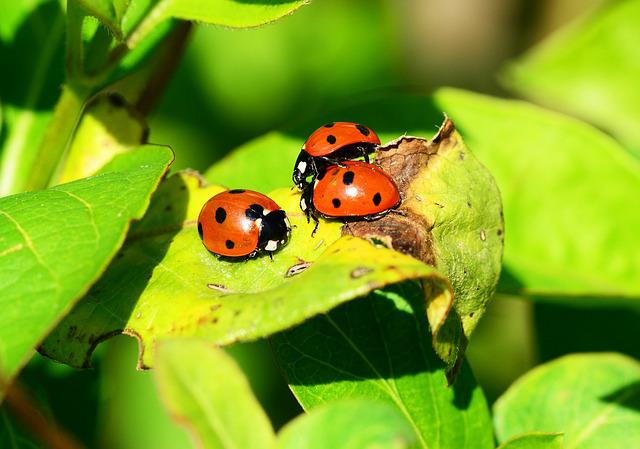
that caused the leaf damage.
(Image by PollyDot from Pixabay )
Plant diversity in the garden and surrounding areas provides habitat for predatory insects, keeping them close to the garden and ready to feed on the insect pests. Mimicking nature by embracing plant diversity is the key to a resilient human-made garden.

Something is Eating My Plants
Spending time each week examining your plants could save a lot of heartache later in the season. Sometimes gardeners will see the offending culprit chewing on leaves or petals but usually, we see the damage of insect pests. Insects who chew actually eat plant material, creating holes and shredded edges in leaves and eating petals down to their bracts. Other insects pierce and suck plant juices from leaves and stems, leaving a trail of sticky residue or discoloration and a weakened plant. Look for future insect populations in the form of egg masses by checking the undersides of leaves and near the nodes where leaves are attached to the stem and remove them.
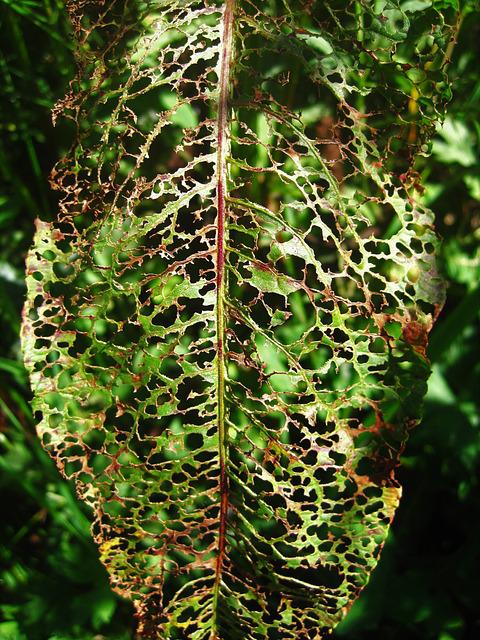
What’s Your Action Threshold?
The first step is to consider action thresholds, which is a concept from Integrated Pest Management. I once helped a gardener who called the Master Gardener’s office and wanted to know what was eating the leaves in her vegetable garden. She expressed dismay at having a garden that showed pest damage. When I recommended that she first try to identify the pest and how much damage it was doing before randomly applying a pesticide, she decided that, instead, she would spray everything in her garden. Her threshold level was quite low!
Fact: Both good and bad insects should be present in a garden and so, leaf-munching and plant-sucking will occur.
Fact: If you want to attract and keep beneficial insects in your garden, you need food for them. Insect pests are their food.
Fact: The application of synthetic and some natural pesticides will also kill the beneficial organisms in the garden.
Regular monitoring of your plants allows you to develop a threshold that works for the plants in your garden. Once damage appears, determine who’s doing it and how bad it is. Do you see beneficial insects at work? You may have to sacrifice a plant or two while waiting for this predator-prey relationship to kick in. If the beneficial insects are not present or if the damage is large scale and your threshold of tolerance has been reached, then the next step is to take action.
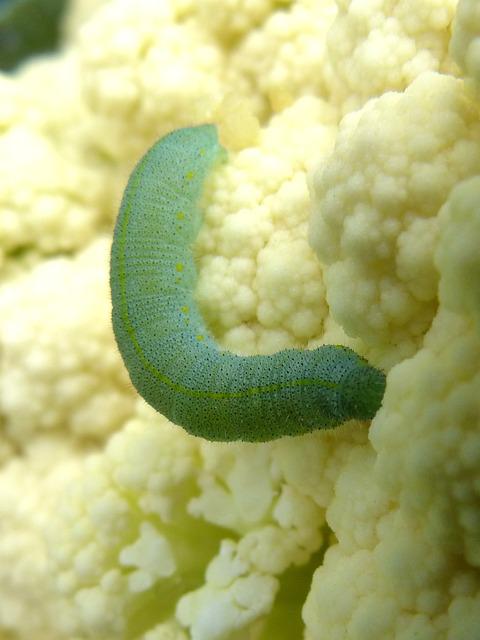
Controlling Insect Pests with Natural Sprays
Identification of pests is critical to controlling them. Investing in an insect ID guide or utilizing online resources can help with the identification process. Some pests show up each season and experienced gardeners recognize their damage immediately. Other pests show up under certain conditions including the effects of a warming climate. If you live in the U.S., your state’s Cooperative Extension Service offers the most current updates on new pests that are expanding their range into your area and will offer a variety of methods for control.
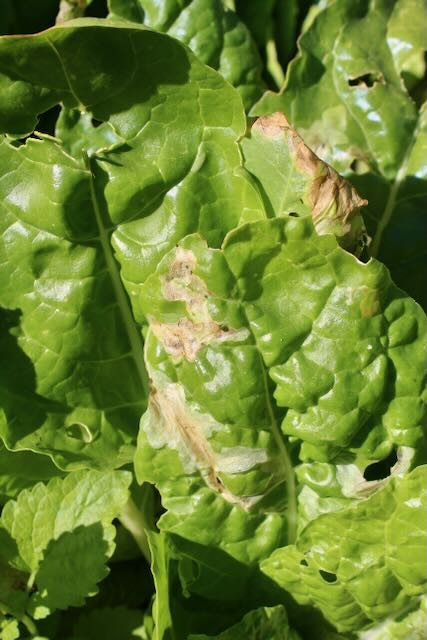
Below is a list of common pests, the kind of damage they do, and strategies for elimination. I have included several recipes for homemade repellent sprays (listed in italics under strategies).
Garden Pests & Strategies for Control
| Pest | Damage | Strategies |
| Aphids (many types and colors) | Suck juice from plant stems, leaves, and flowers. Leave a sticky residue. Vectors for disease. | Spray water to dislodge -a temporary solution – they will return. Plant garlic nearby. Tomato Leaf Spray General Insect Repellent Spray |
| Beetles (blister, flea, Japanese, etc.) | Chew stems, leaves, and flowers. | Soap Spray Commercial neem extract sprays |
| Cabbage loopers | Chew leaves and entire plants. | Remove by hand Garlic Oil Spray |
| Cutworms (nocturnal) | Eat through the stem at the soil surface. | Beneficial nematodes Barriers around stems |
| Leafhoppers Leaf miners | Suck juice from stems and leaves. Vector for disease. | Soap Spray Commercial neem extract sprays |
| Scale (insect “bumps” that cluster on stem – they love rosemary) | Suck juice from stems, fruits, and leaves. Can inject toxins into plants. | Use dormant oil, carefully following directions at the first sign. |
| Slugs and snails (they love basil) | Chew/devour leaves. | Wood ashes around the plant area. Handpick Collect with food/beer traps. |
| Whiteflies (must deal with immediately) | Suck juices from leaves and stems. Vectors for disease. Large infestations can happen quickly. | Soap Spray General Insect Repellent Spray Garlic Oil Spray Commercial neem extract sprays |
General Insect Repellent Spray
This is a useful spray to make and have ready to go in your garden. It is ideal for spraying damaged leaves and fruits. Continue to re-apply as needed and after it rains. Many insects will find the smell or taste distasteful and others won’t be bothered. Note that this spray could kill some beneficials if sprayed directly on them. Whenever possible, identify your garden insects before applying. Test spray on a leaf and check it 24 hours later for damage.
- 3 cups mint or wormwood (Artemisia absinthium) leaves
- 2 large heads garlic, separated into cloves
- 10 cups water
- 3 tablespoons ground cayenne
- Several squirts of mild dish soap (Castile is a good choice)
- In a food processor, finely chop the herb leaves and garlic. Add enough water to make a slurry.
- Pour into a large pot. Add the remaining water.
- Add the cayenne.
- Stir and bring to a boil. Remove from heat. Let sit overnight.
- Strain and add the dish soap.
- Pour into a spray bottle and label.
Tomato Leaf Spray for Aphids
I am fortunate that my only major pest problem is aphids. Despite my healthy soil and healthy plants, they show up, seemingly when I am off on a trip for a few days! I have not tried this recipe but it is now at the top of my Anti-Aphid Crusade for next season.
- 2 cups chopped tomato leaves
- 2 cups water, plus more for soaking
- Cover the chopped tomato leaves with water and soak overnight.
- Strain and dilute the liquid with 2 cups of water.
- Place in a spray bottle and label.
To use: Spray the affected plants including under the leaves.
Caution: People who are allergic to nightshades should not ingest food or herbs sprayed with this spray.
Garlic Oil Spray
Garlic can be a powerful pesticide for aphids but it will kill beneficials, too. It can also harm some plants. I only recommend this spray if you know you have no beneficial insects. This common recipe generally calls for mineral oil, which is a byproduct of the petroleum industry. I have used olive oil instead and it appears to work as well.
- 4 garlic cloves, minced
- 2 tablespoons olive oil
- 2 cups water
- Combine the garlic and olive oil and let sit for a day or two.
- Strain and add the water.
- Put in a spray bottle and label.
To use: Test the spray on a leaf and wait 24 hours to see if the leaf turns yellow or wilts. If it does, dilute the oil more and test again. To apply, spray the affected plant completely.
Soap Spray
This is effective on a variety of pests but you must be diligent and apply weekly until the pests die. Do not apply when over 90°F. Spray directly on pests.
- 1 cup vegetable oil of your choice
- 1 tablespoon castile soap or dishwashing soap (never use dishwasher soap)
- Combine the vegetable oil and soap.
- Store in a glass jar.
To use: mix 2 teaspoons of the mixture with 1 cup of warm water in a spray bottle and label.
Reminder: Proper dilution is important: we have a tendency to think stronger is better but these sprays can cause damage if they are too strong.
Plant Diseases in the Garden
If your plants are looking wilted, stunted, or discolored, it’s time to consider plant disease as the problem. Like humans, plants can suffer from viral, bacterial, and fungal infections.
Viruses are the most difficult to identify and once infected, removal of the affected plant is the only option. (Place in the garbage, not compost.) Environmental conditions are key to preventing viral infections: no standing water, well-drained soil, ample air circulation, protection from extreme temperatures, and control of pests who can be vectors for virus transmissions. Tobacco products and users can transmit the common tobacco mosaic virus simply by touching plants. If you use tobacco, wear gloves when working with plants.
Bacterial infections are more likely to occur in hot and humid environments like greenhouses and tropical environments but bacteria can be transferred to plants by dirty tools. Wash hand tools regularly and disinfect with diluted hydrogen peroxide or bleach solution.
Most disease problems in gardens are caused by fungi in the soil, water, and air.
Fungi have the dubious honor of hosting the largest number of plant pathogens. When you suspect disease in your garden, start your research with common fungal problems. Creating an environment that doesn’t support bad fungi development is the first step and preventative strategies include well-drained soil, ample air circulation, adequate spacing of plants, and early morning watering rather than the evening. Planting regionally adapted species is another strategy; growing a plant that originates in an arid region in a humid environment will likely result in a plant prone to fungal infections.
Damping Off
One of the most common fungal infections affects young seedlings and can spread quickly. Damping-off is a phrase used to describe the sudden death of young seedlings caused by fungal spores that attack the small stems at the soil surface, disrupting the flow of nutrients. Seedlings will fall over or in some cases, if the young root system is infected, slowly wither. Depending on the fungus, it can happen quickly or gradually.
Prevention is key because once damping-off has begun, it cannot be cured. There are several preventative strategies to avoid damping-off:
- Use a soil-less or sterile potting mix to start seeds.
- Plant seeds at the recommended depth for germination.
- If planted in pots, water seedlings from the bottom by placing them in a tray.
- Dust tops of soil with a light layer of small gravel or sand.
- Avoid cramped conditions; allow seedlings room to grow and air to circulate around them.
If you suspect damping off is in place, remove all the affected seedlings immediately. Make a strong chamomile or cinnamon tea, and mist seedlings with it for several days.
Powdery Mildew in the Garden
Another common fungal infection, powdery mildew is easy to identify because of its white powdery presence on leaves. Though it generally won’t kill a plant, if left unchecked it can stunt a plant by restricting photosynthesis and can inhibit or disfigure fruit and flower development. Powdery mildew can affect any herbaceous plant if the conditions are favorable but it does have a few preferred plants: squash, cucumbers, grapes, roses, lilacs, and bee balm (Monarda spp.) are more likely to host it. Interestingly, plants appear to host their own unique mildew fungi, which means that one kind of powdery mildew can infect all of your squash plants but will not transfer and infect a nearby lilac tree.
Powdery mildew can be prevented by creating plant environments that are well-drained, open to air circulation, and receive ample sun – often considered the original fungicide. If you live in a region that is prone to powdery mildew, you can purchase cultivars that have been bred with increased resistance to powdery mildew. No region is immune; unusual seasonal conditions can create the right environment for a powdery mildew infection in areas that are seldom conducive to fungal disease.
If your garden seems prone to powdery mildew, you can try a preventative spray made with one tablespoon of baking soda and one teaspoon of a mild dishwashing liquid added to one gallon of water. This spray can damage some plants so test on a leaf before applying to the entire plant and ideally, apply on a cloudy day.
DIY Spray for Powdery Mildew
The good news is powdery mildew is treatable if discovered in its early stages. First, remove all the affected leaves and place them in the garbage, not your compost where the mildew will happily live on. Thin or prune plants that are close together to improve air circulation. Avoid watering plants from above; water at the base of the plant or use drip irrigation or soaker hoses.
A simple spray made with one part dairy milk to two parts water has been somewhat effective in treating early infections and as a preventative strategy. After removing the infected leaves, spray the entire plant on a sunny day until is soaked. Though researchers have not yet figured out why milk works, it’s believed the sun causes the milk proteins to create antiseptic conditions. In order to be effective, fungicides need to be applied frequently for one to two weeks.
Herb farmer and author Tammi Hartung recommends this plant spray for fungal diseases though she states that success can vary. Since horsetail can be invasive, it is a great way to use this ancient spore-producing plant.
Horsetail Spray
- ¼ cup dried horsetail
- 1 gallon water
- Combine the horsetail and water in a pot. Boil, reduce the heat, and simmer for 30 minutes.
To use: add ¼ cup of the horsetail tea to 1 ½ cups of water in a spray bottle. Apply to affected plants and repeat weekly if symptoms persist.
Growing plants has its challenges but the rewards outweigh them. Creating gardens that embrace the diversity of nature and incorporating preventative strategies will allow gardeners to spend more time reaping the rewards instead of fixing the problems.


